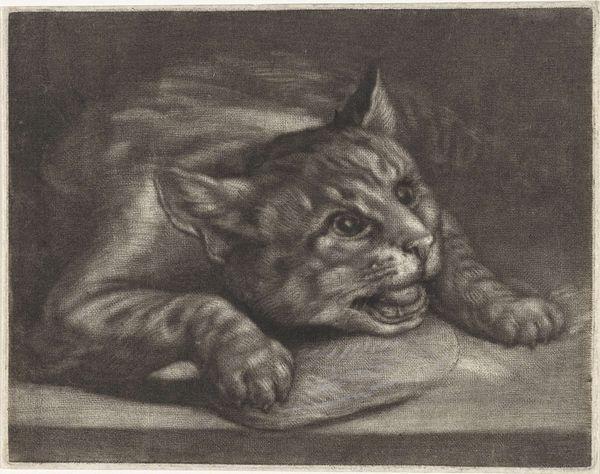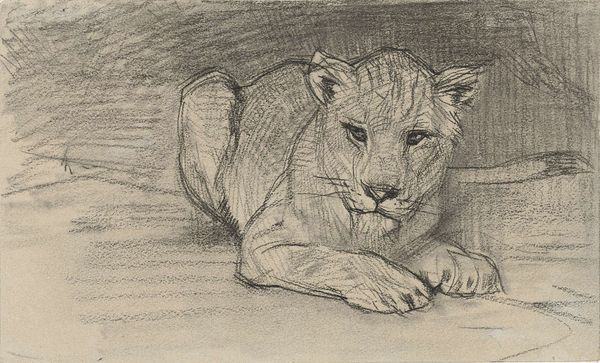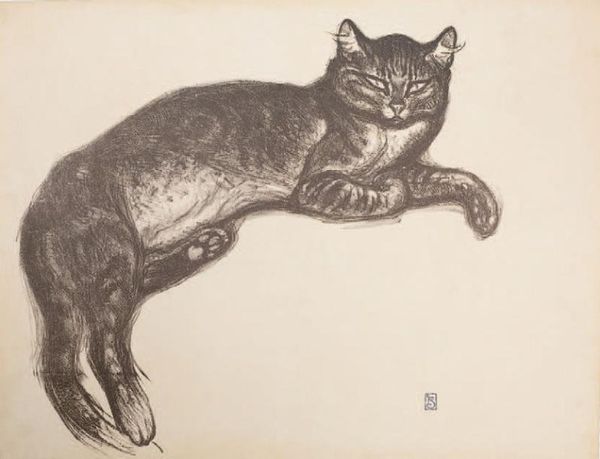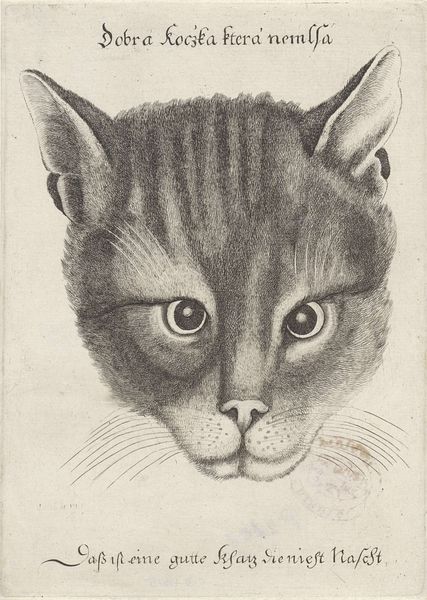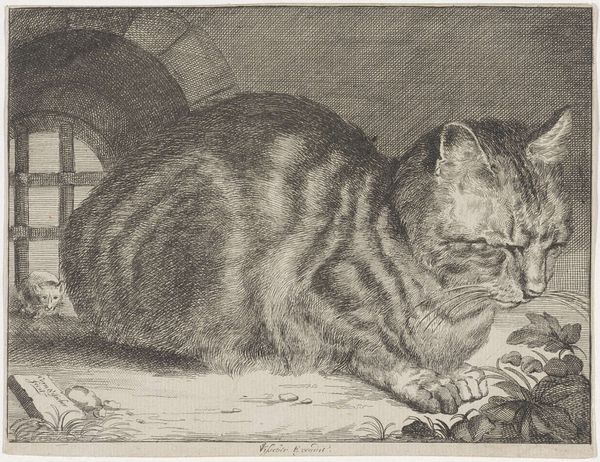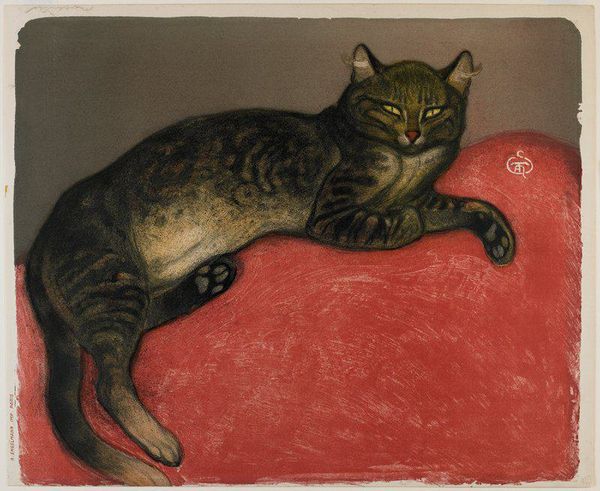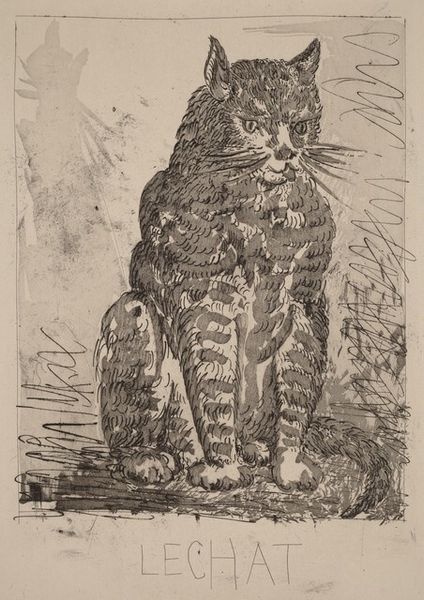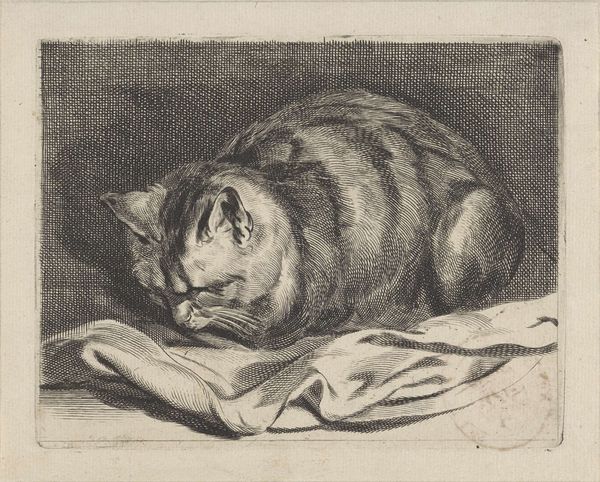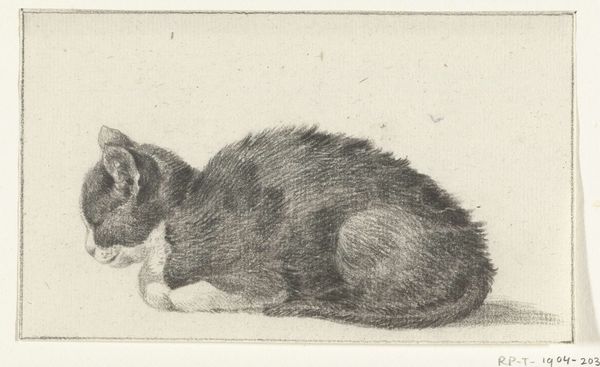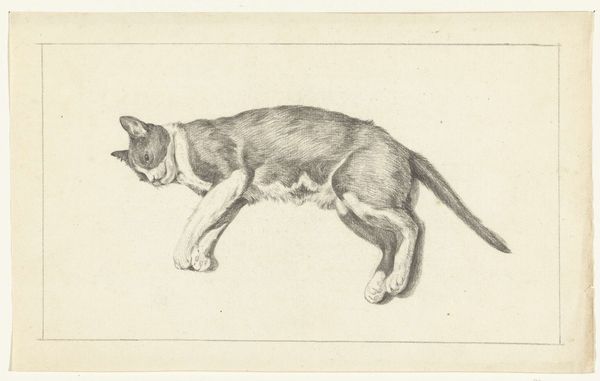
etching
#
dutch-golden-age
#
etching
Dimensions: height 107 mm, width 136 mm
Copyright: Rijks Museum: Open Domain
Curator: Standing before us is "Cat with a Fish," an etching made sometime between 1658 and 1677, attributed to Wallerant Vaillant, currently residing here at the Rijksmuseum. Editor: That's quite the intense gaze! The cat appears utterly fixated, almost feral, guarding its prize. Curator: Indeed! Cats often served as symbols of domesticity, but here the image takes on a wilder connotation. Notice how the fish seems almost lifeless, a stark contrast to the cat's vibrant energy. Editor: Absolutely. The cat’s possessive grip, combined with that aggressive stare, hints at a broader commentary on survival, doesn't it? A ruthless focus on acquisition? Curator: Perhaps. Cats held ambivalent symbolic status during that period; cunning and domesticity co-existed. Looking at this print, I am drawn to how Vaillant captured the emotional range inherent to our relationship with animals. It serves almost as a mirror of our own drives. Editor: Yes, there is certainly something predatory evoked. Thinking about gendered aspects too, do you think there is anything about the work and domesticity, which, if we're considering a home, often implicates gender norms. The "domesticated" animal isn't always safely indoors as many others are kept outside the home. So what's the home, then? Who and what belongs, and what becomes excluded in those considerations? Curator: That's a fascinating way to put it. Consider, the etching medium allows for detailed nuances of texture, making the cat’s fur and the fish scales tactile even in print. Does it perhaps suggest an inherent cruelty within natural processes? The tools and craft also call to question. As etchings require strong acid, it leads me to think how harsh chemical transformations reflect the tensions depicted in the image itself. Editor: Chemical transformations as tension... that is something to chew on! It reminds us that our understanding of the 'natural' world is always mediated, not only by what we see and what we are allowed to consider belonging in "nature", but the stories and conditions and tools of production are the filters that help give "nature" legibility in culture. Thanks for letting me consider some interesting questions today! Curator: And thank you. A stark reminder, indeed, of nature, culture, and the complicated lenses of the so-called natural.
Comments
No comments
Be the first to comment and join the conversation on the ultimate creative platform.
